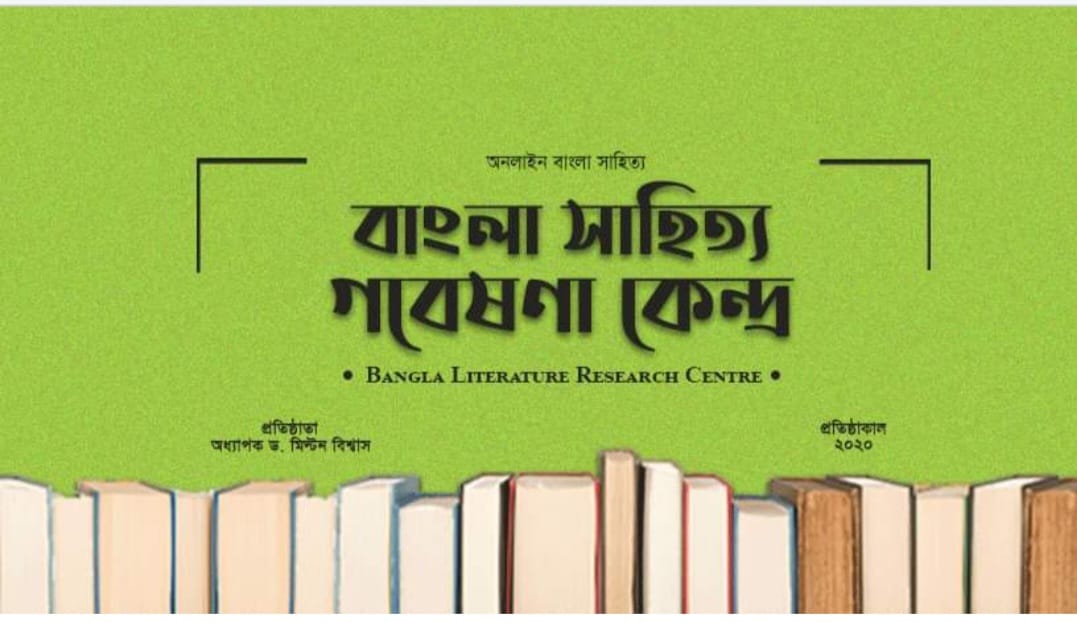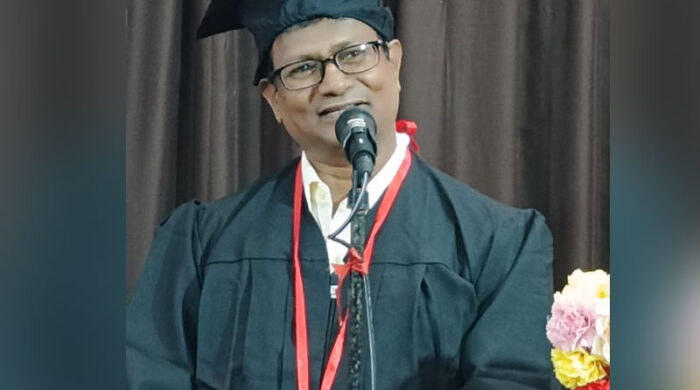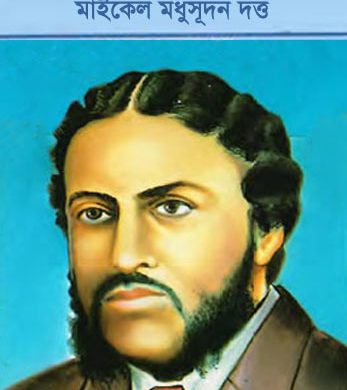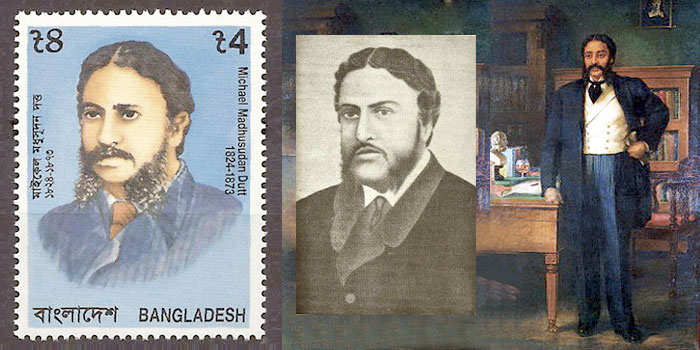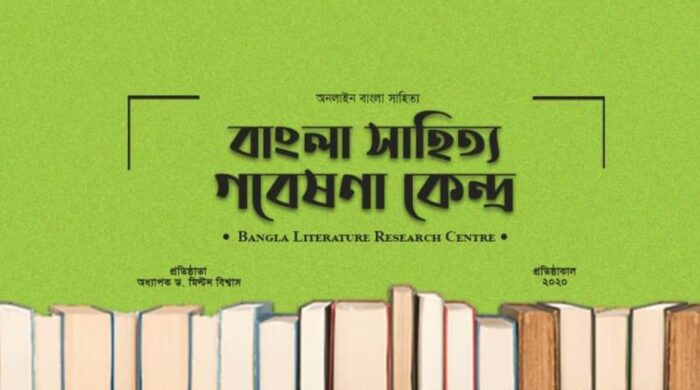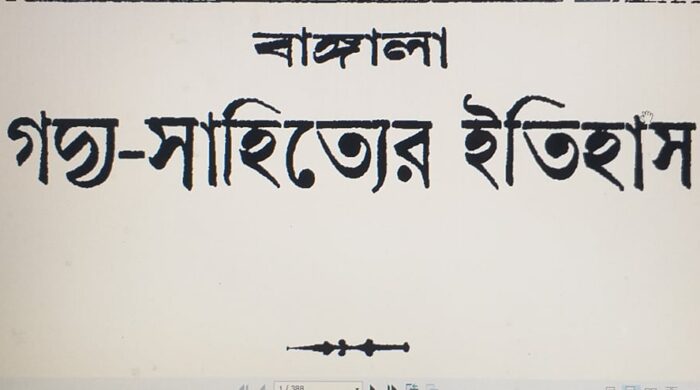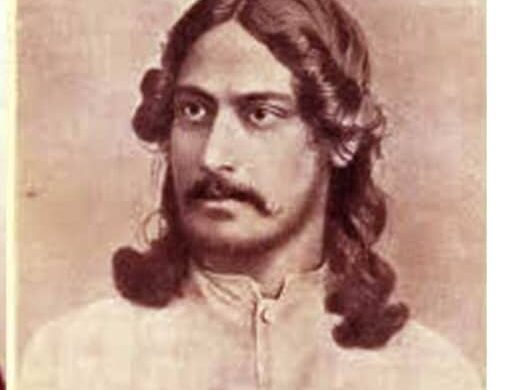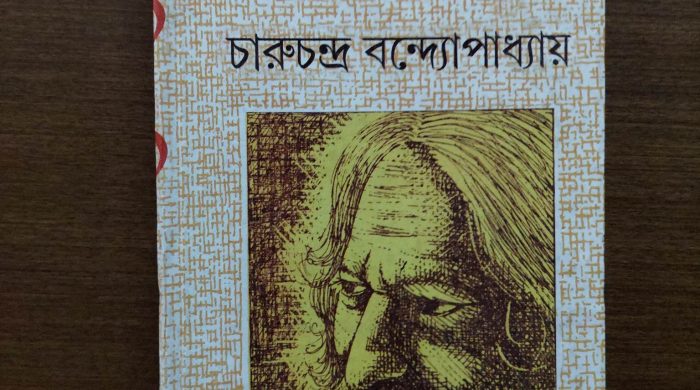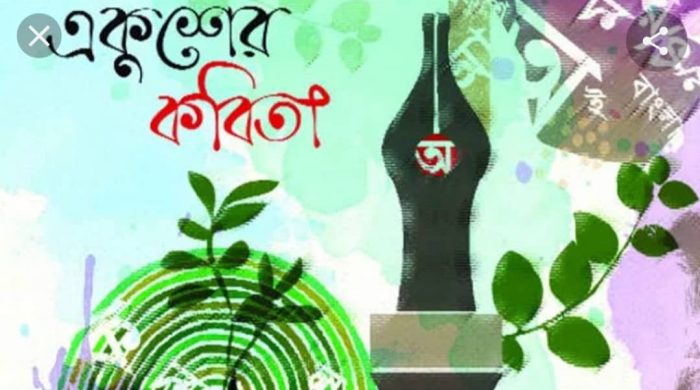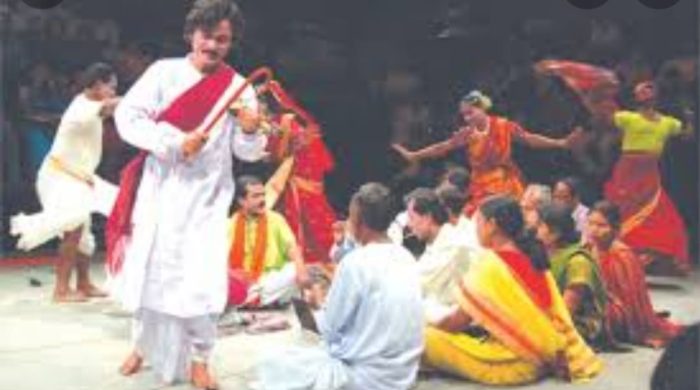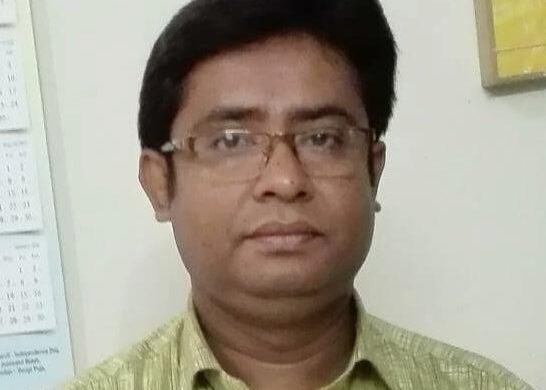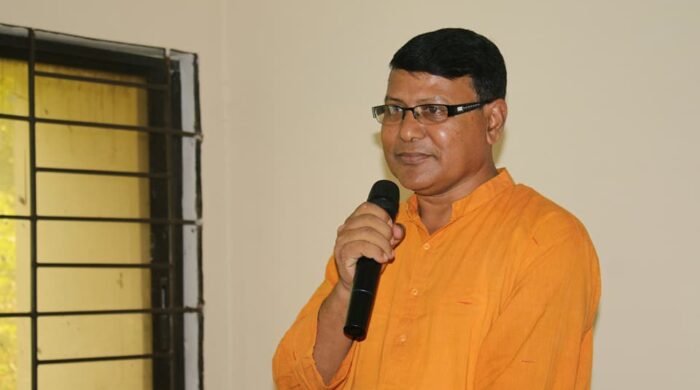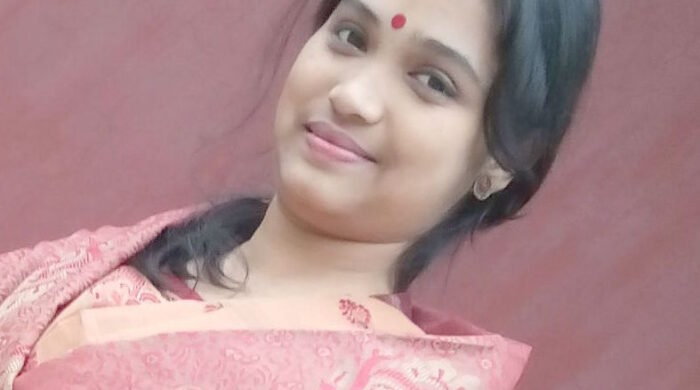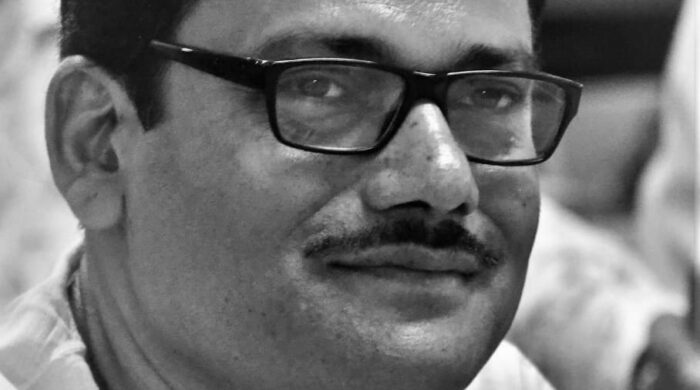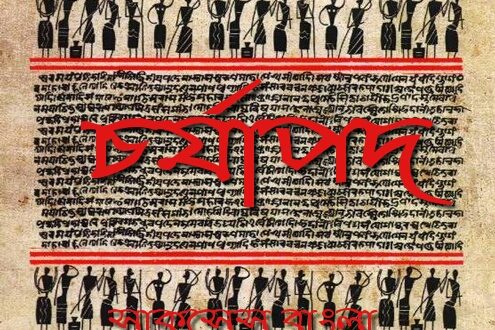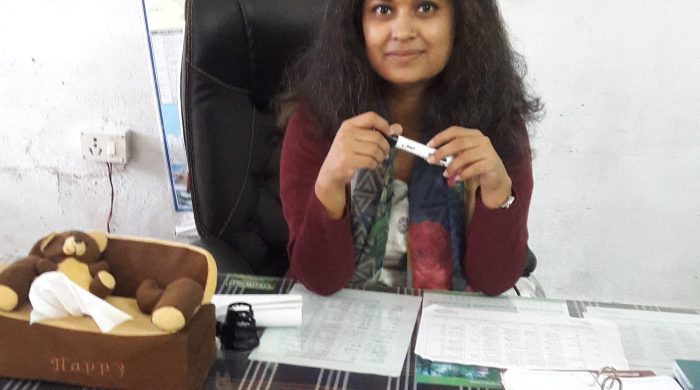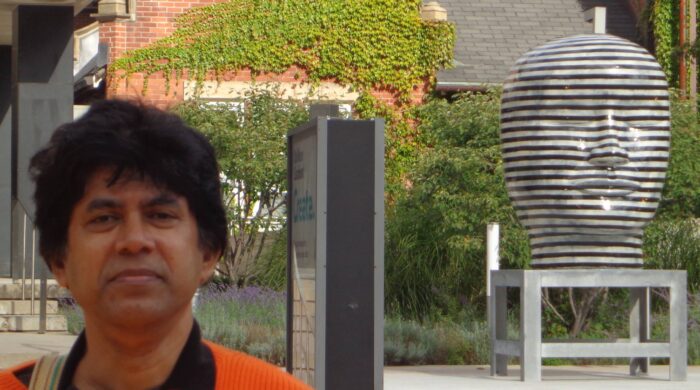
Subrata Kumar Das
When Anowara, the most significant one among the earlier novels written in Bangladesh, was published in 1914, it was simply an insignificant effort in comparison to the whole domain of Bangla novels. In those decades glorification of the religious beliefs and lives was the theme of most of the novels. Later on picturisation of real Bangali life became a common topic. In the last years of the fifties our novelists gradually turned to human mind and its analysis. After the liberation war novels about the same began to come forth. Even after twenty-nine years of our liberation it has not ceased to be an interesting topic yet. Throughout this century we observed much novelties. Various changes regarding content as well as form of the novels of the last half-century overwhelmed our readership. From ordinary narration we have now reached to magic realistic presentation through stream of consciousness, realism, surrealism etc. Everyone will agree that by the turn of the twentieth century, our novels have achieved at least a recognition.
The history of Bangla novels started its journey with Durgeshnondini in 1865 written by Bankimchandra Chattopadhyay (1838-1894). We cannot deny that there had been some worthwhile efforts before. It is true ‘when the novel was introduced in Bangla in the middle of the 19th century, the form itself was new, the prose in which it was written was new, the secular tone was new in a country hitherto wholly dominated by religion, and the society in which and for which it was written was new.’ (Annada Sankar & Lila Roy: 168) But the mighty pen of Bankimchandra and his descendants like Rabindranath Tagore (1861-1941) and Saratchandra Chattopadhyay (1876-1938) developed the newly introduced genre in such a way that ‘new’ changed into ‘matured’ soon after the turning of the nineteenth century. It may be observed that all these literary activities went on in full swing in Kolkata and surrounding area. Dhaka, which became the provincial capital after the partition in 1947 and the capital city after the great liberation war in 1971, could not share necessarily although literature created by and of the people of Bangladesh area later on flourished with great success. Everyone will agree that Syed Waliullah’s (1922-1971) Lalshalu (1948) is the milestone in the modern novels of Bangladesh, but there had been enough attempts worthy to mention before that.
Pre- 1947 Period
Before 1947 the novelists who tried to enrich the novels of the then East Pakistan i.e. present Bangladesh are Mohammad Najibar Rahman (1860-1923), Kazi Imdadul Huq (1882-1926), Kazi Abdul Wadud (1894-1970), Sheikh Idrish Ali (1895-1945), Akbaruddin (1895-1978), Abul Fazal(1903-1983), Humayun Kabir (1906-1969) et.al. Events like Separation of Bangla (1905), Foundation of Muslim League (1906), and Unification of Bangla (1911) inspired the Muslim community of Dhaka to establish a new identity in the horizon of literature also. Mohammad Najibar Rahman’s above mentioned Anowara (1914) is the first instance where the socio-familial milieu of them was portrayed. This novel moved the whole Bangla Muslim community after the first publication. The novel could not create any novelty from artistic point of view, but it carried great importance for its picturization of socio-economic and political culture and ideals of the uprising populace (Rafiqullah Khan: 25, Translation). Most of the novels of the era centred on Muslim society and belief and orthodoxy. Najibar Rahman’s Premer Somadhi (1919) and Goriber Meye (1923), Sheikh Idris Ali’s Premer Pothe (1926) are a few examples of this trend though Kazi Abdul Wadud’s Nodibakshe (1919) manipulated a different theme. In Nodibakshe for the first time the life of the agrarian Bangali farmers took an artistic delineation.
Then came Kazi Imdadul Huq who sprinkled a new wave. His Abdullah (published in periodicals in 1920 and in book form in 1933) is a ‘bourgeous and humanitarian revolt against devotion to Peers, religious dogmas, purdah-system and disparity between Ashraf and Atraf (Biswajit Ghosh: 134, Translation). Kazi Abdul Wadud and Humayun Kabir extended this attitude (Syed Akram Hussain: 97). Before the appearance of Humayun Kabir’s Nodi O Nari (1952. The original English Novel Rivers and Women got published earlier in 1945) another progressive novelist Abul Fazal declared his distinct viewpoint. Beginning with Chouchir (1927) he afterwards wrote Prodip O Patongo (1940) and Shahoshika (1946) where he exposed human psychological analyses, though not for the first time in Bangla novels, it was a first attempt in novels of Bangladesh at least.
East-Pakistan Era
The time before and after the separation of India was of much significance. The incident bore more importance for the people of our region because since then the Bangla speaking community were divided into two parts – the East and the West Bengal. The millennium old culture and unity of Bangali nation were smashed. Moreover just after the creation of Pakistan, the existence of language became a great question. The West-Pakistan ruling government tried to impose Urdu as the principal language on the Bangali people. As a result the whole society reacted strongly which took permanent impression on literature also.
In this tumultuous era the foremost successful, both from art and reality points of view, is Syed Waliullah’s Lalshalu (1948). Herewith less mention but worth mentioning another novel is Mofijon (1948) by Mahbub-ul Alam (1898-1981). Then writers from middle class background began to contribute more and more. From various professions they began to come with multifarious contents. In the first years of Pakistan-period our people mostly took village life as their contents, but they gradually diversified their interests. Newly born urban society began to establish itself as worthy to be literary contents. Along with them political developments also took place in novels.
In the first decade after 1947 the most prominent novelists of our country are Abul Fazal, Akbar Hossain (1917-1981), Shaukat Osman (1917-1998), Abu Rushd (1919-), Kazi Afsaruddin (1921-1975), Daulatunnessa Khatun (1922-1997), Syed Waliullah, Sarder Jayenuddin (1923-1986), Abu Ishaque (1926-2003), Shamsuddin Abul Kalam (1926-1997) et. al. In the next decade a good number of writers joined the previous group. Among the new faces Chowdhury Shamsur Rahman (1902-1977), Satyen Sen (1907-1981), Abujafar Shamsuddin (1911-1989), Ahsan Habib (1917-1985), Nilima Ibrahim (1921-2002), Abdur Razzak (1924-1981), Khondkar Md. Eliash (1924-1995), Rashid Karim (1925-), Shahidulla Kaisar (1927-1971), Anwar Pasha (1928-1971), Abdar Rashid (b 1930), Alauddin Al-Azad (b 1931), Abdul Gaffar Choudhury (b 1931), ), Zahir Raihan (1933-1972), Syed Shamsul Huq (b 1935), Humayun Kadir (1935-1977), Shahid Akhand (b 1935), Razia Khan (b 1936), Shawkat Ali (b 1936), Dilara Hashim (b 1936), Indu Saha (b 1940), Ahmad Sofa (1943-2001) are the most prominent ones.
Depiction of village life was the core theme of a huge number of novels. Sometimes it centered the superstitious village mind or the oppression by the influential groups on the common people, some other times depressed womanhood took this place. Love between men and women in pastoral context was also a subject of many novels. Lalshalu by Syed Waliullah, Kashboner Konya (1954), by Shamsuddin Abul Kalam, Surya-Dighal Bari (1955) by Abu Ishaque, Meghabaran Kesh (1956) by Ishaq Chakhari, Adiganta (1956) by Sardar Jayenunddin, Mohuar Desh (1959) by Tasadduk Hossain, Janani (1961) by Shaukat Osman, Jhar (1962) by Syed Sahadat Hossain, Karnafully (1962) by Alauddin Al-Azad, Sareng Bou (1962) and Sangsaptak (1965) by Shahidulla Kaisar, Aranya Mithun (1963) by Badruddin Ahmad, Modhumoti (1963) by Rabeya Khatun, Hazar Bachhar Dhore (1964) by Zahir Raihan, Bobakahini (1964) by Jasimuddin, Pannamoti (1965) by Sardar Jayenuddin are the significant examples in this regard.
Urban town life, its problems and complexities are also the contents of a good number of novels in this era. Uprising middle class people, their social context and love in their life are portrayed in the novels of this trend. Significant novels of this stream are Jibone Pother Jatri (1948) by Abul Fazal, Pother Porosh (1957) by Daulatunnessa Khatun, Bhorer Bihongi (1958) by Satyen Sen, Suryer Niche (1958) by Atahar Ahmad, Pathasranta (1959) by Nilima Ibrahim, Shesh Bikeler Meye (1960) by Zahir Raihan, Kanyakumari (1960) by Abdur Razzak, Uttam Purush (1961) by Rashid Karim, Ek Path Dui Bank (1962) by Nilima Ibrahim, Akash Jodi Nil Hoi (1962) and Ihai To Prem (1963) by Syed Sahadat Hossain, Prasanno Pashan (1963) by Rashid Karim, Pingal Aakash (1963) by Shawkat Ali, Akasher Rong (1964) by Zobeda Khanam, Panna Holo Sobuz (1964) by Shahid Akhand, Nirjan Megh (1965) by Humayun Kadir, Ghar Mon Janala (1965) by Dilara Hashim, Aronyo Nilima (1965) by Ahsan Habib, Antahshila (1967) by Kazi Md. Idris, Digonter Swapno (1967) by Razia Majid, Mon Ek Shet Kapoti (1967), Shaheb Bazar (1967) and Ananto Aneysha (1967) by Rabeya Khatun, Bipani Mon (1968) by Mir Abul Hossain, Saurav (1968) by Anis Chowdhury, Anishchita Ragini (1969) by Abu Rushd, Borof Gola Nodi (1969) by Zahir Raihan, Rajabagh Shahimar Bagh (1969) by Rabeya Khatun etc.
Meanwhile the whole Bangali nation began to experience a new turmoil, first regarding their language and then regarding their national identity. In the meantime the flow of progressive politics overshadowed the young generation across the country. Novels like Jibon Khuda (1955) by Abul Monsoor Ahmed exposed the context of Pakistan Movement. At the same time communal picture out of this movement took the upper-hand in a formidable number of novels like: Ranga Probhat (1957) by Abul Fazal, Khuda O Asha (1964) by Alauddin Al-Azad, Neer Sandhani (1968) and Nishuti Rater Gatha (1968) by Anwar Pasha etc. In some of them writers yearned for the restoration of Hindu-Muslim amity. Political crisis of the newly born country Pakistan was also dealt as a burning issue in novels like Nongor (1967) by Abu Rushd and Mon Na Moti (1968) by Anis Siddique. By then the people of East Pakistan i.e. of present Bangladesh viewed the language movement and its consequences. This tremendous incident did not miss the keen eyes of out novelists. The most significant effort in this context is Jahir Raihan’s Aarek Falgoon (1968). Other political incidents like the class conflict, socialism, and movement in the cultivators was depicted in the novels like Dui Mahol (later on renamed as Alamnagorer Upokatha 1955) by Shamsuddin Abul Kalam, Surya Tumi Sathi (1967) by Ahmad Sofa etc. Shaukat Osman’s Kritodasher Hashi (1962) and Raja Upakhyan (1970) are also recognized as political novels, but they were distinct in being symbolic. Abdul Gaffar Chowdhury’s Chandradwiper Upakhyan (1960) and Nam Na Jana Bhore (1962) portrayed the uprising agrarian society and its conflicts.
In this period the world of our novels became enriched with some accomplished participation that embodied historical aspects in their novels. Abujafar Shamsuddin’s Bhaowal Gorer Upakhayan (1963) about the Faraizi Movement, Sardar Jayenuddin’s Nil Rong Rokta (1965) about the Indigo crisis, Satyen Sen’s Kumarajiva (1969) about the flourishement of Buddhism, and Oporajeyo (1970) about the Sepoy Mutiny etc. are a few examples among them. Psychological complexities were very much favoured by some novelists in this decade. Syed Waliullah’s Chander Amabashya (1964) and Kando Nodi Kando (1968) are the most successful and worthwhile endeavours. In his unique language and presentation Waliullah dived into the super-ego of human mind which placed him on the highest rank of the novelists of Bangladesh till now. Immediately before the sixties there emerged another trend where novelists emphasized the sexual behaviours and deviations of the characters. Razia Khan began this with her Bot-tolar Uponyas, and Anucalpa, both published in 1959. Alauddin Al-Azad and Syed Shamsul Huq are the prominent names in this field. Teish Nambor Toilochitro (1960), Shiter Sheshrat Boshonter Prothomdin (1962) by Alauddin Al-Azad and Ek Mohilar Chhobi (1959), Anupama Din (1962), Simana Chhariye (1964) by Syed Shamsul Huq are laudable mentions in this regard.
Afterwards came the most memorable days of Bangali nation. They demanded for an independent nation, revolted for it and at last after ten month long war they became able to identify their motherland as an independent nation in the map of the world. Breaking the shackles of two hundred years’ domination by the British and the Pakistani, our red sun arose in the east. After the massacre of three million people and huge violation and harassment of womenfolk and loss of property Bangladesh emerged as a secular and democratic nation on December 16, 1971.
Bangladesh Era
Since 1971 Bangladesh has come across through different political phases. The country became free, but in no sphere it could behave like a free country after the independence. Everywhere there were hopelessness and frustration. All the utopian dreams became shattered. On August 15, 1975 the father of the nation was assassinated by some undisciplined military officers and a black sheet encircled the whole nation. For long fourteen years there came, to speak true, little change. After nine years’ demand for democracy the nation got the taste of it in 1990.
After the liberation war the trend which mostly grasps the novels of Bangladesh was to take the freedom fight as a unique subject. The first of this discipline is Anwar Pasha’s Rifle Roti Awrat (1973) which he wrote during the war. The novels which directly deal freedom fight as their subject are Shaukat Osman’s Jahannam Hoite Bidai (1971), Nekre Aranyo (1973) Dui Soinik (1973), Rashid Haider’s Khanchai (1975), and Andha Kathamala (1982), Shawkat Ali’s Jatraa (1976), Selina Hossain’s Hangor Nodi Granade (1976), Mahmudul Huq’s Jiban Aamar Bone (1976), Syed Shamsul Huq’s Nil Dangshon (1981) and Nishiddho Loban (1981), Harun Habib’s Priyo Joddha Priyotoma (1982) etc. Novels like Amar Jato Glani (1973) by Rashid Karim, Ferari Surya (1974) by Rabeya Khatun, Abelay Ashamoy (1975) by Amjad Hossain also portray the different facets of our liberation war. Some writers have also handled the hopeless picture of Bangladesh in their novels. Rashid Karim’s Prem Ekti Lal Golap (1978), Ekaler Rupkatha (1980) or Sadharon Loker Kahini (1982) are better presentation of this milieu. Critics say that though after the liberation huge number of novels was written about our war, none of them could depict the historic incident in necessary epic form.
Most of the writers who were contributing in the pre-liberation period were also very creative in this period. Among them Rashid Karim is the most prolific one. In his novels middle-class society and their societal and psychological analysis are mostly focused. Another prolific one is Alauddin Al-Azad whose first novel after the independence came out in 1986 and within some ten years he wrote about sixteen novels, though in none of them he could penetrate his readership as he could by his earlier novels. Syed Shamsul Huq is also a prolific and noteworthy writer. Along with a huge number of books of other genres he wrote a good number of novels also. He is always very experimental in both technique and form, Khelaram Khele Ja (1973) placed him in great controversy for his open delineation of human sexual behaviour. Liberation war, its consequences, hopeless human existence and analysis of human mind and society take sharp pen-picture in his novels. Duratwa (1981), Mahashunye Paran Master (1982),Ek Juboker Chhayapath (1987) etc. are his praiseworthy works. Another powerful writer Shawkat Ali wrote Prodoshe Praakritajon (1984), which is a real representation of the Bangla of twelve century during King Laksman Sen. His trilogy Dakshinayaner Din (1985), Kulaya Kalasrot (1986) and Purbaratri Purbadin (1986) also deserve much compliment. Razia Khan and Dilara Hashim are also by now very popular novelists. Another major novelist who wrote Anur Pathshala before liberation war in 1967 is Mahmudul Haque. As an introvert one, he is always less productive. Excluding Nirapad Tandra (1974), he wrote Khelaghar (written 1978, published 1988), Kalo Baraf (written in 1977, published in 1992), and Matir Jahaj (written in 1977, published in 1996). Ahmad Sofa, the junior most among this group has been writing novels with different tone. In Onkar (1975) he delineated the suppressed Bangali mind of the pre-liberation period in a very artistic and symbolic description, whereas in Gaavi Brityanto (1994) he presents the contemporary picture in a meticulous allegory. His Ardhek Nari Ardhek Ishwari (1996) is a novel of romantic love and Pushpa Briksha Ebong Bihanga Puran (1996) is a narration of true human affinity to nature i.e. to birds, trees etc.
In the first decade after the liberation a few new faces appeared in the domain of our novels among which Selina Hossain (b 1947) is the most prominent one. She started with Jalochchhwas (1972) and till now she has authored more than twenty-one novels most of which may demand our attention. Her Hangor Nodi Granade (1976) is a success written on our liberation war. She has written novels like Taanaporen (1994) on coastal life and natural disaster. In the historical novels she also roams very aptly from recent present to remote past. Gayatree Sondhya (3 volumes: published in, 1994, 1995, 1996), Kalketu O Fullora (1992), or Chandbene (1984) are a few to cite here. On the other hand when the popular novelist Humayun Ahmed (b 1948) wrote Nondito Naroke (1972) and Shankhaneel Karagar (1973), it sounded very novel to Bangali readership. Though gradually he turned to less serious things, his popular titles are Eka Eka (1984), 1971 (1985), Brihonnola (1989), Joyjoyonti (1994), Kobi (1996), Shuvro (2000) etc. A serious poet, essayist and literary researcher Abdul Mannan Syed (b 1943) published is first novel Pariprekshter Dasdashi in 1974 which was later on followed by Kolkata (1980), Poramatir Kaaj (1982), O Te Ojogor (1982), Hei Songsar Hei Lota (1982), Kshuda, Prem, Aagun (1994), Shyamoli Tomar Mukh (1997) etc. In the later years of the seventies we got Hasnat Abdul Hye (b 1939), though senior but arrived later. Suprabhat Bhalobasa (1977) was his first novel, which has reached twenty in number by now. Along with his other novels he has introduced a different form of novels called biographical. In this class his novels are Sultan (1991) Ekjon Aaroj Ali (1995) and Novera (1995) – all of which are based on the biographical sketches of giant Bangali characters. Rizia Rahman (b 1939) is also a favourite name. Starting with Uttar Purush which came in black and white in 1977, she wrote some fifteen novels in the eighties. Her voluminous Bong Theke Bangla (1987) is an epic composition about the past culture and heritage of our nation. Her other major novels are Rokter Okshor (1978), Alikhito Upakhyan (1980), Ekal Chirokal (1984), Prem Aamar Prem (1985), Ekti Phuler Jonyo (1986), Harun Phereni (1994) etc. Another senior writer who began his novelist career in this decade is Bashir al-Helal (b 1936). Only one novel by him Kalo Elish was published in 1979. His other novels include Gritokumari (1984), Shesh Panpatero (1986), Nurjahander Modhumas (1988) etc.
In the eighties we have got some senior writers also who wrote novels for the first time along with the promising young ones. Among the earlier writers Abubakar Siddique’s (b 1936), Jalarakshas (1985) and Kharadaha (1987) appeared with much novelty especially regarding their contents. In these two novels he has exposed the rude but true realities of our people during flood in Bagerhat-Khulna area (Jalarakshas) and during drought in northern districts (Kharadaha). His important later novel is Ekatturer Hridoybhashma (1997). Although Makbula Manjoor (b 1938) started in the late years of the sixties, most of her novels came out in the eighties and nineties. Kaler Mondira (1997) gave her many introductions to a great readership. Middle class city people, their joys and sorrows, love and separation are the core ideas of Rahat Khan’s (b 1940) novels. His significant works include Omol Dhabol Chakri (1982), Ek Priyodorshini (1983), Chhayadampoti (1984), Hae Shunyota (1984), Sangharsho (1984), Shahar (1984), Hae Anonter Pakhi (1989), Madhyamather Khelowar (1991) etc. Akhtaruzzaman Elias (1943-1997), one of the most artistic but least productive writers, launched his journey with Chilekothar Sepai (1987). His most prestigious work Khoabnama, which came out in 1996, is a milestone in the history of Bangla novels. In this decade another senior novelist Abu Ishaque’s second novel Padmar Palidwip (1986) was published after thirty-one years of his debut novel Surya-Dighal Bari. In this second one, as he did in his first novel, Abu Ishaque again proved his honesty and nearness to true literature. Appearance and disappearance of Chars (strip of sandy land), their effect on nearby humanity etc. have taken a keen narration in Padmar Palidwip. Haripada Datta (b 1947) is also a worthy name whose Ojogor (Vol. i-1989, Vol II-1991) chronicles the recent past history very remarkably. His previous novels are Eshane Ognidaho (1986) and Ondhokupe Janmothsob (1987). In 2000 he has written an epic volume titled Jonmo Jonmantor.
From the early years of this decade we felt the arrival of some young novelists who, later on, obtained enough popularity. Monju Sarkar (b 1953), Imdadul Haq Milon (b 1955) and Moinul Ahsan Saber (b 1958) are the few but most common names in this regard. Monju Sarkar’s Tamosh (1984), Nagno Agontuk (1986), Protima Upakhyan (1992) and Abashbhumi (1994), Imdadul Huq Milon’s Jabojjibon (written in 1976, published in 1900), Nodi Upakhyan (1985), Bhumiputro (1985), Kalakal (1985), Poradhinota (1985), Rupnagor (1988) Rajakartontro (1990), Moinul Ahsan Saber’s Adomer Jonye Opeksha (1986), Pathor Somoy (1989), Char Torun Toruni (1990), Manush Jekhane Jai Na (1990), Dharabahik Kahini (1992), Opeksha (1992), Kobej Lethel (1992), Tumi Amake Niye Jabe (1993) Prem O Protishodh (1993), Songsher Japon (1997) got much recognition from the literati. Meanwhile we got another powerful writer Shahidul Zahir (b 1953) although he never chased for trivial popularity. His first novel Jibon O Rajnoitic Bastobota was published in 1988 while his second, till now the last, She Rate Purnima Chhilo came out in 1995. Magic realism, which is a recent trend of the Latin American novels, takes place in Shahidul Zahir’s narration. His language and presentation are very similar to that of the novels of Marquez and other Latin American writers.
The last decade of twentieth century is comparatively fruitful for Bangladeshi novels. To mention a few, we have got Al Mahmud’s (b 1936) novelistic exposition, Bipradas Barua’s (b 1940) Buddhist life, Humayun Azad’s (b 1947) brave creations, Akimun Rahman’s (b 1959) novels about womanhood, as well as Nasreen Jahan’s (b 1964) novels of magic realism. Shamsuddin Abul Kalam’s historic work Kanchongram was also published in 1997 in this decade. Syed Samsul Huq’s masterpiece Bristi O Bidrohigon, published in 1998, is a milestone on our past heritage and liberation war.
Senior poet Al Mahmud’s debut novel Dahuki came out in 1992 which was followed by Kobi O Kolahol (1993), Upamohadesh (1993), Kabiler Bone (1993), Purush Sundor (1994), Nishinda Nari (1994) etc. Though Bipradas Barua began his novelist career in 1975 with his debut novel Ochena, his formidable novels were published during this decade. His major novels are Somudrochar O Bidrohira (1990), Muktijoddhara (1991), Shramon Goutam (1996) etc. Humayun Azad commenced his novelist carrier with Chhappanno Hajar Bargamile in 1994, which was a courageous slap on martial law and dictatorship. In no time the novel brought its writer much name and popularity. Humayun Azad’s creativity was reproved in his following novels like Sab Kichhu Bhenge Pare (1995), Subhabrata, Tar Samparkita Susamachar (1997), Rajnitibidgon (1998) etc. Mohammad Nurul Huda (b 1949), mostly acclaimed as a poet, had also two attempts in this period. Janmajati (1994) and Moinpahar (1995) not make any third attempt. Another less productive writer ventilated his capacity in writing novels, but sorrowfully he did is Akimun Rahman. She has by now written only two novels: Purusher Prithibite Ek Meye (1997) and Raktapunje Genthe Jawya Machhi (1999). She is the first novelist ever in Bangla language in whose writing the untold and unknown secrets of womanhood are getting tongue. The other significant writer of the decade is Nasreen Jahan. Her first novel Urukku (1993) arrived with much appreciation. She manipulated the elements of magic realism in her novels. In this regard her well-known novels are Chandrer Prothom Kola (1994), Chandralekhar Jaadubistar (1995), Sonali Mukhosh (1996), Ure Jai Nishipakshi (1999) etc. Meanwhile Anisul Huq (b 1965) has established himself as a popular writer. His Andhokarer Ekshaw Bachhar (1995) presented him a very honourable place but in no other novel he could revive that honour. Imtiar Shamim (b 1965) is also a young but promising name for novels of recent Bangladesh. In Dana Kata Himer Bhetor (1996) he presented a NGO-world. His Amra Hetechhi Jara (2000) encompassed a very touching story of the sorry saga of post-independence Bangladesh life. Along with all the above ones Sushanta Majumder’s (b 1954) Garam Hath (1995), Salam Saleh Uddin’s (b 1965) Chhayashorir (1998) are very careful efforts.
When Bangla novel turns one hundred and fifty years, novels of Bangladesh falls fifty years back. It is true that in its history of about one hundred years novels of Bangladesh could not reach the standard of world novels, but we must agree that we have got a good number of novels where creative emancipation of the writers has been established.
Bangladeshi Novels of the New Century
Bangladesh’s novelists have enriched our country with hundreds of thousands of novels ever since 1947 or the early 1920s. From the early decades we got a good number of geniuses. After the liberation war in 1971, the number of novels per excellence began to rise. Afterwards, the new century has brought many new faces in our fiction world. There have been the appearances of many old faces as well who did their first efforts in novels during these years. The decade also took away some of the very significant novelist for ever. But above all; the total scenario seems really very impressive as well as positive.
The literary stalwarts who passed away during the first years of the twenty first century included Ahmad Sofa (1934-2001), Abu Ishaque (1926-2003), Humayun Azad (1947-2004), Mahmudul Haque (1940-2008), Alauddin Al-Azad (1932-2009), Abdul Mannan Syed (1943-2010), Abu Rushd (1919-2010), Razia Khan (1936-2011), Rashid Karim (1925-2011) et al. The premature death of Sofa was a great shock for the whole literati while the brutal killing of Humayun Azad by the terrorists was more shocking to the whole nation along with the writing community of the whole world. Azad’s Pak Sar Jomin Sad Bad (2004), written on the bitchy attitude of the fanatic groups towards the religious minorities, created much tumult among the literati across the country. For his bravery and straight forwardness, Azad will be remembered by the Bengali readers for many forth coming decades. His stand against dogmatism made him well known to the outer world too.
The elderly writers coming forth with novels and drawing people’s attention include Hasan Azizul Haque (b.1939), the talented short story writer in Bangla language. His first novelistic attempt was Brittayan in 1991. His appearance with that novel brought less success but his Aagunpakhi (Firebirds) published in 2006 has crowned him with much fame. In the novel, the mastermind has tremendously portrayed the agonies caused by the separation of Bengal in 1947. Sazzad Qadir (b. 1947), a very elderly litterateur of the country, started writing novels at his sixties. He has by now published two including Ontorjaal (Internet, 2008) and Khei (Clue, 2011). It could be noted that they are different in nature and can be termed as information novel. Qadir accommodates huge and astounding information in his fiction and penetrates the readers to take the fiction as a replacement of essays too.
The other writer whose novels first came into lime light in this decade is Syed Monzoorul Islam (b. 1951). He has authored two novels including Adhkhana Manush (A Half Man, 2006) and Tin Porber Jibon (A Life of Three Phases, 2008). But the essayist whose identity as a novelist stoke the media very strongly is Harishankar Jaladas (b.1955). His debut novel Jalaputro (The Son of Water) published in 2008, created much tumult as a successor of Adwaita Mallabarman (1914-1951). His Dahankaal (The Time of Burning, 2010) has been as if a second part of his first novel. This newly appearing novelist wrote more two books that are simply masterpieces to cite. Kosbi (The Prostitute, 2011) and Ramgolam (2012) are really worthy Bangla novels to mention. Ramgolam, an epoch-making creation, based on the life and society of the outcastes, has hilariously been hailed by the readers.
Saleha Chowdhury (b. 1943) has by now authored a good number of novels along with books on other genres. Along with her Anand, Binni Dhaner Khoi, Mayurir Mukh, Shesh Marbela, Aniket Manab, Rupontir Sukh Dukkho, Zarakhan O Shreshtho Premik, Amrita Ke Ghirey. Muhurto, Ekjon Jushonarar Galpa she wrote her magnum opus Britain Ekti Dwip (Britain is an Island) in 2009 that gives a very meticulous description of the London life of the expatriate Bangladeshi people. Kamal Rahman (b. 1955), another expatriate one, has poured two research-based novels including Tajtandury (2011), Jhumpahar (2012) of great height. Sezan Mahmud (b. 1967), an expatriate fictionist has been contributing for the last decade though recently his novels Ognibalak (2009) rewarded him with much recognition. In 2012 he has published Leethi, another significant novel to mention.
Among the elderly writers who have endured very energetic and active, Hasnat Abdul Hye (b.1939) could be named as the top most one. A novelist and short story writer of reputation, Hye embarked on a different genre in our novel. His biographical novels include Mahapurush (1982) in which the writer created a single character, a fictitious one, named Syed Belal. Afterwards, he began sketching real and well-known personalities like Aaraj Ali Matubbar, S M Sultan and Novera in his novels Sultan (1991), Ekjon Aaroj Ali (1995) and Novera (1995). In 2012 he has written the fifth in this trend naming Loraku Potua (The Painter Fighting) based on the life of the eminent Bangladeshi artist Kamrul Hasan. Another very serious, sincere and hard-working writer of the country is Bipradash Barua (b.1940). A very potential one in fiction and non-fiction Barua wrote Kalonodi (Black River) in 2011 where the story is set in Bangladesh and Japan. Before that he wrote a novel Oshru O Aguner Nodi (A River of Tears and Fire) which demonstrated the breath-taking incidents occurring in Bangladesh after the Parliament Election of 2001. In this connection it could be noted that the barbaric scenario that election resulted production of some more novels with special clarity and vividness. Mohsin Habib’s (b. 1965) Kukurer Kanna Sona Jai (The Barks are Heard, 2002) and Salam Azad’s (b. 1964) Bhanga Moth (The Broken Temple, 2004) were brave literary accomplishments.
Selina Hossain (b. 1947) presented Jamuna Nodir Mushaira (Poetry on the River Jamuna), based on the life of Mirza Ghalib (1797-1869) in 2011. On the other hand, Humayun Ahmed (b.1948), the most prolific fictionist Bangla language has ever got was as productive as the earlier decades. In the new millennium, he has presented many new volumes for his readers like Joshna O Jononir Golpo (2004), Lilaboti (2005), Modhyanho (2008). In 2011, he came forth with a novel of historical interest named Badshah Namdar. Another novelist of the popular genre is Imdadul Haq Milan (b.1955) whose Noorjahan created unfathomable interest in 1995 when the first volume was published. The second volume of this magnum opus of Milon came in 2002 followed by the last volume in 2011. Another major novel of the decade by Milon, Jibonpur came in 2009.
A renowned feminist writer Akimun Rahman (b. 1959), debuted with Purusher Prithibite Ek Meye (The Lone Lady in Men’s World) in 1997 where she sketched the very personal life of a Bengali Muslim woman and thus initiated picturization of a new world. Afterwards, she published Raktapunje Genthe Jawya Machhi (A Fly Drowned in Blood and Pus) in 1999 with similar social contexts followed by Joboner Roudre Urechhilo Koyekti Dhulikona reached the readers in 2004. Her recent novel includes Jokhon Ghashera Aamar Cheye Boro (2008). Nasreen Jahan (b.1964), the most successful novelist of magic realistic genre, got huge reputation during the last years of the 1990s. In the new century she has been contributing with her new creations one after another. Her Shongkhonortoki (2003), Mrityushokhigon (2006), or Kobojkundola (2012) are worth mentioning. Samanta, published in 2005 is an excellent depiction of the degrading city youths for drug addiction. The author of She (The Person, 2002) and Maa (Mother, 2003), Anisul Huq (b.1965) has bagged the Bangla Academy Award for 2011 for his overall contribution. In 2012 his Jara Bhor Enechhilo (The People Who Brought the Dawn) got much audience. Chanchal Shahriar (b. 1966), a novelist of commonplace feelings and ideas has by now produced novels like Din Jai Tanaporener Din (Thus Goes the Day of Hardship, 1998), Eisob Valobasa Michhe Noi (All These Loves are not False, 2000), Meye Tumi Ki Dukkho Bojho (Hei Girl, You Know My Sorrows, 2012).
The twelve years of the new century produced many youth novelists with genius. In this context the name of Ahmad Mostofa Kamal (b. 1969) could be the most exciting to cite. His first novel Agontuk (The New Comer) was published in 2002. After seven years his second novel came out and became able to bag some prizes. Ondho Jadukor (The Blind Magician, 2009) was really a good read followed by KannaPorbo (Ballad of Tears, 2012) and Porompora (Reciprocal, 2012). KannaPorbo is capable to overwhelm any reader for its treatment of a social phenomenon and usage of narrative technique. The next writer who poses a sort of craze to the youth literary activists is Zakir Talukder (b. 1965). In 2002 he started his novelistic carrier with Kursinama (2002) which was followed by Hante Thaka Manusher Gaan (The Songs of the Walking People, 2006), Bohiragoto (The Outsiders, 2008) and Musolmanmongol (2009). His recent novel Pitrigon (The Forefathers, 2011), and Kobi O Kamini (The Poet and the Woman, 2012) are the sincere experiments by a this powerful youth writer. From the women folk Papri Rahman (b. 1964) has come forth with much strength and fervour. She has authored three novels by now such as Pora Nodir Swopno Puran (2004), Boyon (2008) and Palatia (2011). Masuda Bhatti (b.1973), another formidable female voice started with JibonerBhognagsho (The Small Parts of Life) which was followed by Poriyaji Mon (2003), Nodi Ekhono Neel (2005), Botpakurer Upakhyan (2011) etc. In 2007, her novel Torobarir Chhayatole (Under the Shade of a Sword) created much controversy.
The novels of Mahmood Nasir Jahangiri (b. 1959), Imtiar Shamim (b. 1965), Hamid Kaiser (b. 1966), Hamim Kamrul Haque (b. 1973) have also brought much appraisal for the readers. Jahangiri wrote a very powerful novel in the year 2002 named Kahat Kahor Shal (Famine Year). Along with his former novels naming Dana Kata Himer Bhetor (1996) and Amra Hete Chhi Jara (2000), the novels Imtiar has composed during the recent days include Ondho Meyeti Josna Dekhar Por, Chorsongbeg etc. In the recent book fair his novel Mrityugondhi Bikele Sushil Songitanusthan has raised new aspirations from his readers. Hamid Kaiser has illuminated a very special sort of novels in Bangladesh. He does not author the so-called travel-literature; rather his travel books have uplifted themselves as travel novels. Along with his novels like Titmou (2003) and Mon Bari Nei (My Mind is Away from Home, 2009) Hamid has written the new sort with Mohanondar Teere (On the Bank of the Mahananda, 2008) and Buker Vetore Ek Bon Achhe (There is a Forest in the Heart, 2012). Any reader will be able to discover a salient plot-development and characterisation in the last two novels by Hamid. The two novels that Hamim Kamrul Haque (b. 1973) has brought to light by now include Raatri Ekhono Joubone (The Night is Yet Youthful, 2008) and Goponiyotar Malikana (The Ownership of Secrecy, 2010).
Earlier Mamun Hussain (b. 1962) was mastering in writing short stories for long and for his especial narratology he has been a craze to the youth writing community. Very recently he has started novels as well with Necropolis in 2011 which was followed by Haspatal Bonganubad in 2012. Mamun has developed a special craftsmanship in which the story does not take the upper hand, rather many a feature of the plot crowd altogether. Shaheen Akhtar’s (b. 1962) debut novel Palabar Poth Nei (No Escape Route) could not drag much audience but Talaash (The Search) has been able, especially after its getting an award. Recently her Shokhi Rongomala (2010) has also has added more food for the fiction readers of the country. Mashiul Alam (b.1966) came forth with his novels Aami Sudhu Meyetike Banchate Cheyechi (I only Wanted to Save the Girl) in 1999 and Tonushrir Songe Dwitio Raat (The Second Night with Tonushri) in 2000. In the recent decade his pen produced Ghora Masud (Horse Masud, 2004), Baba (Father, 2009) and Dui No Haspatal (Hospital No 2, 2011). Mojib Erom (b. 1969) has by now written only one novel Mayapeer (2009) with new insight and novel language. No doubt the way he narrates his story in Mayapeer is unusual in our language. Prasanta Mridha’s (b. 1971) novella Mrityur Aage Mati (Soil before Death, 2002) was a very heart-felt story of the minorities leaving for India. In 2012, his novel Rupkumar O Horbola Sundorir Osomapto Pala has come out. Sk. Almamun (b. 1973), a very powerful novelist of the decade has brought only one novel named Nuhuler Monchitro (The Mindmap of Nuhul, 2008). Samir Ahmed (b. 1973) debuted with his novel Mora Kotaler Josna (2002) and bagged an award but sorrowfully after that has remained silent for long. Poet Reza Ghatak (b. 1970) has emerged with a novel Maa in the 2012 book fair. As a fictionist Swakrita Noman (b. 1980) has already begun to draw the attention of the critics too. His novels include Naavi (The Naval, 2008), Dhupkushi (2009), Joleswar (The Water God, 2010), Raajnoti (The Royal Woman, 2011), Begana (Non-relative, 2012). His Raajnoti has brought much fame for the youth novelist.
There are some more names to utter with pride, no doubt. Many of them write well, but get little recognition. Wasi Ahmed, a good example among those, wrote Meghapahar (The Cloud Hill) and Roudro O Chhayar Noksha (A Sketch of Sunshine and Shade). His recent endeavor is Shitpakhira (2011) has added some more new readers. Selim Mozahar, the promising writer debuted with Jachhnar Angule Trital (2000) but did not attempt any second novel till date.
Everyone will admit that there have many novels written along with the above ones. Some novels emphasise on lofty themes, some on craftsmanship. But there are some novels too that exhibit the manipulation of both. Some novels got acquaintance for media coverage, some for their inner merit. And we will find only the novels will stand the test that come up with their literary values.
References
Annada Sankar and Lila Ray, Bengali Literature, Pashchimbanga Bangla Academy, Kolkata, 2000
Biswajit Ghosh, ‘Bangladesher Uponyas’, Sahitya Patrika, Vol. 28 No. 01, DhakaUniversity, Dhaka, 1984
Rafiqullah Khan, Bangladesher Uponyas: Bishay O Shilparup, Bangla Academy, Dhaka, 1997
Syed Akram Hossain, ‘Bangladesher Uponyas: Chetanaprabaha O Shilpajijnansha’, Prosango Bangla Kathashahitya, Mawla Brothers, Dhaka, 1997
Bibliography
Bangla Academy Charitabhidhan, Bangla Academy,Dhaka, Second Enlarged Edition, 1997
Bangla Academy Lekhask Abhidhan, Bangla Academy, Dhaka, 1998
Bangla Uponyase Chitrita Jiban O Somaj, Sudhamoy Das, Dhaka, 1995
Purba O Pashchim Banglar Uponyas, Shahida Akter,Bangla Academy, Dhaka, 1992
Bangladesher Uponyase Char Dosok, Kalyan Mirbar,Kolkata, 1992
Amader Uponayse Bisoy Chetona : Bivagottor Kal,Muhammad Idris Ali, Bangla Academy, Dhaka, 1988
(Subrata Kumar Das, Writer, immigrant in Canada)
